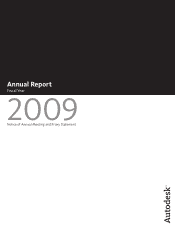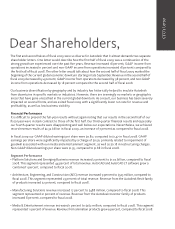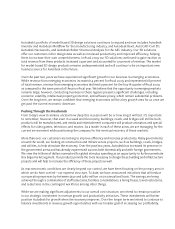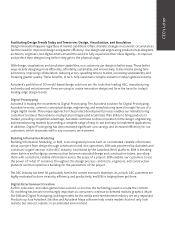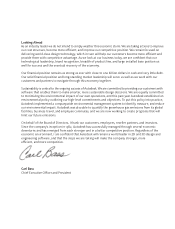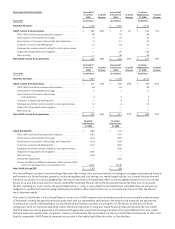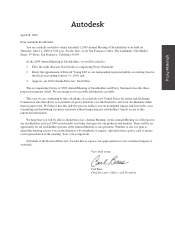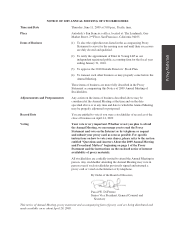Autodesk 2009 Annual Report Download - page 4
Download and view the complete annual report
Please find page 4 of the 2009 Autodesk annual report below. You can navigate through the pages in the report by either clicking on the pages listed below, or by using the keyword search tool below to find specific information within the annual report.Autodesk’s portfolio of model-based D design solutions continues to expand and now includes Autodesk
Inventor and Autodesk Moldow for the manufacturing industry, and Autodesk Revit, AutoCAD Civil D,
Autodesk Navisworks, and Autodesk Robot Structural Analysis for the AEC industry. Our D solutions
oer our customers richer design data as well as increased productivity and improved eciency, helping
them to increase their own competitiveness. In fiscal 2009 our D solutions continued to gain traction as
total revenue from these products increased 23 percent and accounted for 27 percent of revenue. The market
for model-based D design products remains underpenetrated and will continue to be an important new
business source for Autodesk in the future.
Over the past two years we have experienced significant growth in our business in emerging economies.
While revenue from emerging economies increased 14 percent for fiscal 2009 and represented 18 percent
of total revenue, revenue from emerging economies declined 31 percent for the fourth quarter of fiscal 2009,
as compared to the same period of the prior fiscal year. We believe that the opportunity in emerging markets
remains large; however, conducting business in these regions presents significant challenges, including
economic volatility, intellectual property protection, and software piracy, which remain substantial problems.
Over the long term, we remain confident that emerging economies will be a key growth area for us once we
get past the current economic downturn.
Pushing Through the Headwinds
From today’s view it remains unclear how deep this recession will be or how long it will last. It’s important
to remember, however, that even in a weak world economy, buildings, roads, and bridges will still be built,
products will be manufactured, and media and entertainment companies will produce animation and special
eects for video games, television, and movies. As a leader in each of these areas, we are managing for the
current environment while positioning the company for the eventual recovery of these markets.
More than ever, our customers are looking to improve eciency and increase productivity. Many governments
around the world, are looking at construction and infrastructure projects, such as buildings, roads, bridges,
and utilities, to help stimulate the economy. Over the past two years, Autodesk has increased its presence in
the government arena and has already experienced success both domestically and with foreign governments.
We view the trillions of dollars earmarked for global stimulus spending as an opportunity to further penetrate
this large market segment. Our products provide the tools necessary to design these building and infrastructure
projects and will help to increase the eciency of these projects as well.
As macroeconomic conditions are clearly beyond our control, we have been focusing on the primary area in
which we do have control—our expense structure. To date, we have announced initiatives that will reduce
our operating expenses by between $230 and $280 million on an annualized basis. The savings are being
achieved through a combination of sta reductions, facilities consolidations, a hiring freeze, travel restrictions,
and reductions in the contingent workforce among other things.
While we are making significant adjustments to our overall cost structure, we intend to remain proactive
in our strategic investment in revenue growth and productivity initiatives. These investments will better
position Autodesk for growth when the economy improves. Over the longer term we intend to continue to
balance investments in revenue growth opportunities with our broader goal of increasing our profitability.

